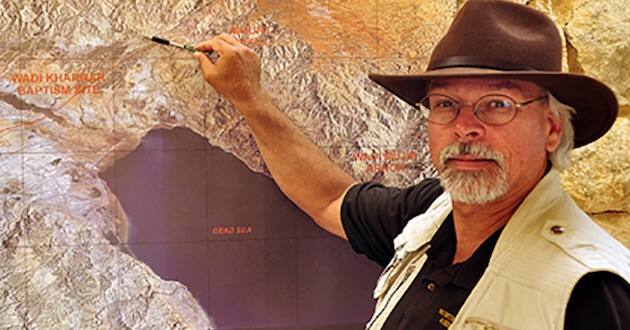As archaeologists continue to find sites validating biblical stories, one says there’s now proof for the location of Sodom.
Steven Collins, dean of the College of Archaeology at Trinity Southwest University, told “The Rosenberg Report” that his team uncovered pottery from the mid-Bronze Age at a site in Jordan that appeared to have been melted by “flash heat,” thus matching the biblical account that says God destroyed Sodom with sulfur and fire. Digging in the soil, Collins said, “as soon as we get a few centimeters into that matrix, this piece of pottery, the shoulder of a storage jar, is facing up at us. And it looks like it’s glazed.”
Collins referenced a 2022 paper in “Nature” in which 21 scholars and researchers said they had uncovered evidence of a “highly unusual catastrophic event” — potentially a meteor — that left a “charcoal-rich destruction layer” and melted object roughly 4,000 years ago in Tall el-Hammam. The paper posited that Tall el-Hammam was “wiped out in the blink of an eye,” Collins said.
Destruction of the multi-storied palace. Photo showing jumbled rubble of four-story Palace atop Floor 1. Remains of debris from upper stories are labeled as follows. #1 represents broken mudbricks and debris from shattered upper walls. #2 and #3 are voids and layers formed when trapped textiles (rugs and tapestries) burned, leaving only fibrous ash and carbon. ‘Blow-over’ (in blue) is composed of windblown, laminated deposits that sealed the ruined structure for ~ 3600 years, beginning at the time of destruction. #4 marks fragments of white limestone plaster (CaCO3) mixed with carbonate spherules from the palace walls and ceiling. Scale stick has 10-cm markings.
Meanwhile, Collins said, the Tall el-Hammam site matches the biblical evidence. In the book of Genesis, he said, “there are at least 25 known pieces of geography [in scripture] that you can triangulate between to take you to the city of Sodom. When you do the science of Sodom, you go to the text first. Why? Because the Bible is the only place, the only ancient text, that has survived with the name Sodom in it.
“Where was Lot standing when he lifted up his eyes and said the whole plane of the Jordan was well-watered? He was at Bethel and Ai. And then it says he traveled eastward.”
Tall el-Hammam is east of Bethel and Ai, Collins said, and other locations in the region that have been posited as sites for Sodom don’t fit the biblical narrative.
The discovery comes as the biblical archaeology world continues to buzz about the “curse tablet” found at Joshua’s altar in Samaria. The tablet is considered to be the most important biblical discovery ever made because it proves the stories of the Old Testament were written down contemporaneously, and not just passed down orally.
